I pull up to what appears to be your typical hospital complex: a cluster of tan and cement-colored buildings gated at various security entrances. It’s warm outside and the mugginess is hovering; it’s one of those days where the clouds wonder when, not if, a crack of thunder will spill their darkened centers right open.
But the rain never comes, and it’s fitting. At a place where visits are prompted by other dark spots—the kind discovered on x-ray images—one might expect to find a subtle veil of gloom.
But at St. Jude Children’s Research Hospital, that is not what I step into.
“Twenty-eight years. It has to be a wonderful place or I wouldn’t have stayed,” says Karen Smith, Project Manager at St. Jude. She’s showing me around the new lab where soon all patient formulas and feeding tube meals will be made. “I met my husband here. I got married in the pavilion. I had my reception in the cafeteria,” she says. “Both of my children have volunteered here for years and worked here while going through college.”
I’m in Memphis to visit St. Jude, an organization that exists to cure childhood cancer—without any patient ever seeing a bill. For anything. Ever.
There’s a synergistic approach to treating patients at St. Jude’s, Smith informs me, where the support staff—in physical therapy, occupational therapy, and nutrition—works together in teams specialized by a patient’s diagnosis—i.e. solid tumor, infectious disease, or endocrine issue. Every disease requires a “special knack,” she explains. Nurses, social workers, Child Life specialists, and those from rehabilitation services round with physicians to stay updated on a patient’s condition. From there, individual meal plans are created or re-worked, to prioritize the most medically beneficial caloric intake for the day.
“Every day could change like this,” Smith says, snapping her fingers. “You could spend days planning and then wham, kid spikes a temp, starts vomiting, and it goes in a whole new direction. We try to give everything: calories, protein, fat. The good calories—not just sugar and junk food. Then, of course, vitamins and minerals because these kids are still growing.” Smith adds, “We’re trying to keep them healthy enough so when they [graduate to] survivors, they’re looking good.”
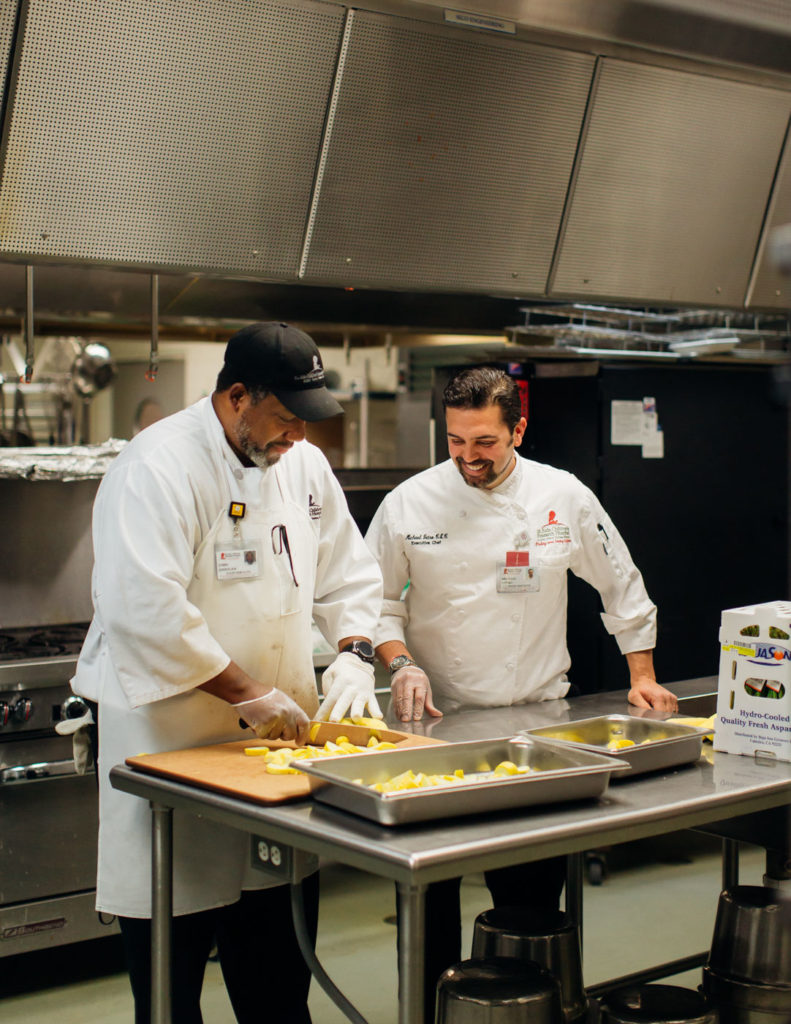
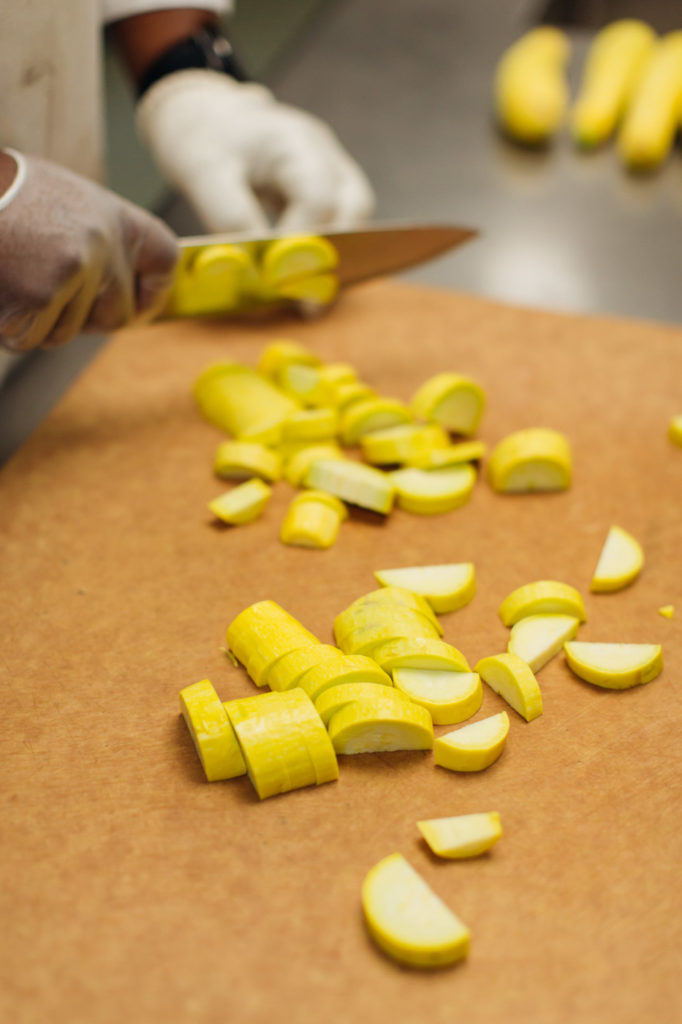
Admittedly, so far this doesn’t deviate too much from what you might expect at any hospital trying to balance disease treatment with optimum health. But there’s something else settled within my conversation with Smith, and other conversations I’ll have at St. Jude, that I can’t pinpoint right away.
In the meantime, Smith continues. “We look at their needs and where they are in the growth stages,” she explains, detailing the customization of a patient’s meal. “Then we look at the disease and how that’s affecting that growth. If they can eat, we always try to get them the things they want. Our staff goes to the grocery store and picks up what patients ask for. Our staff goes every day.”
“It is a hard road to hoe because our cure rate is so high,” she admits, a slight lilt to her voice. For acute lymphoblastic leukemia, the most common type of pediatric cancer, St. Jude cures at a rate of ninety-four percent. As a whole, the hospital’s cure rate is over a remarkable eighty percent.
“I’ve seen [kids] as patients and then over there in survivors’ clinic with heart disease, obesity and hypertension. So we try to be level-headed. We try to say, ‘If today you want Oreos, then we’ll do that. But as you get better, we are going to hit you with some healthier options.’”
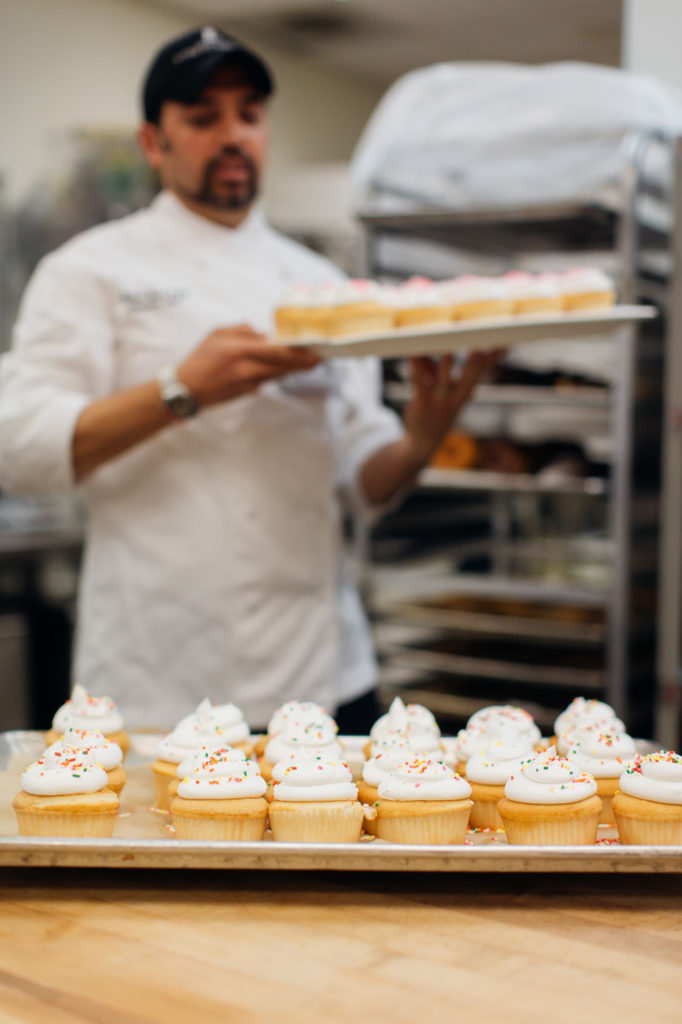

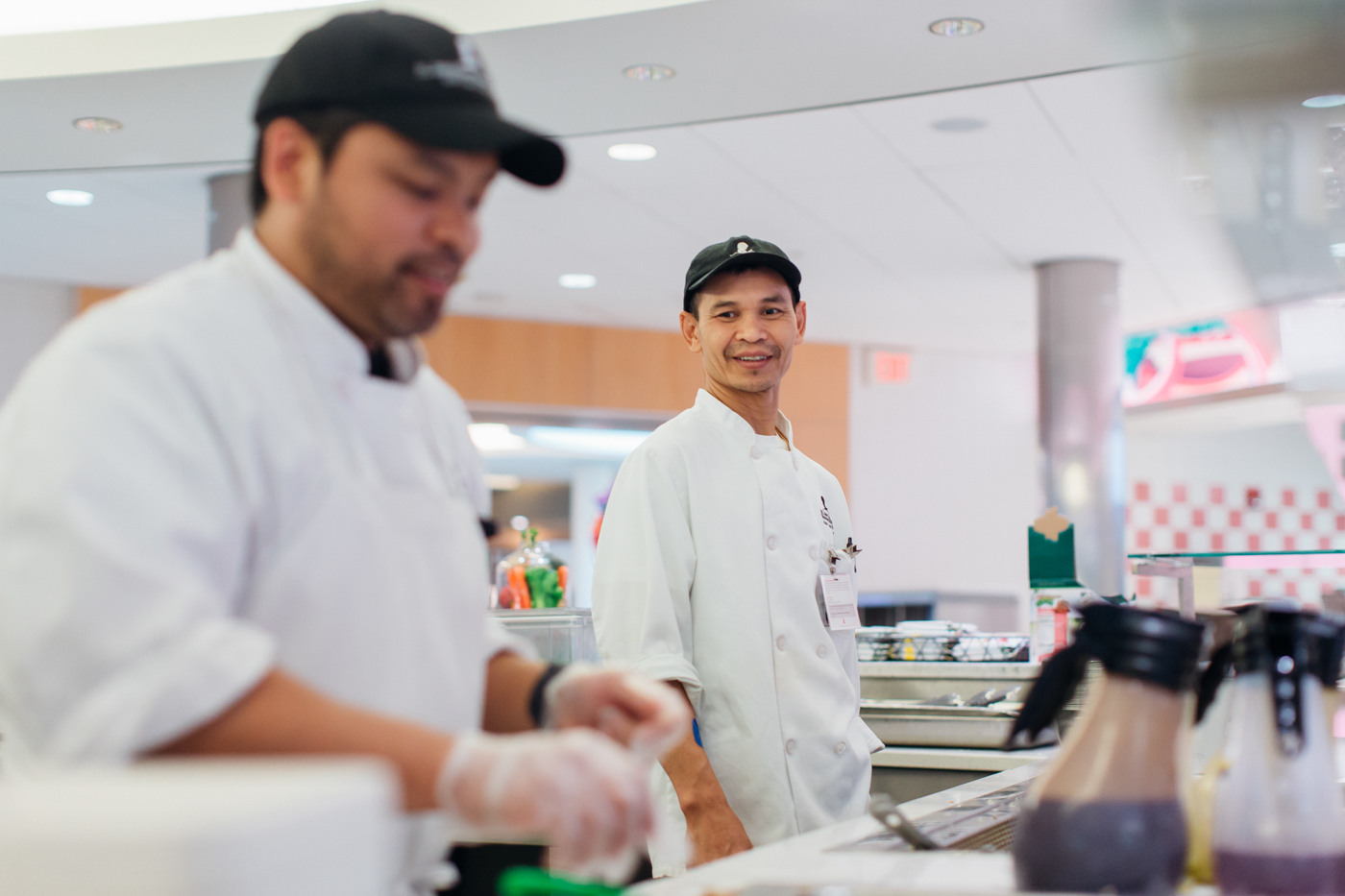
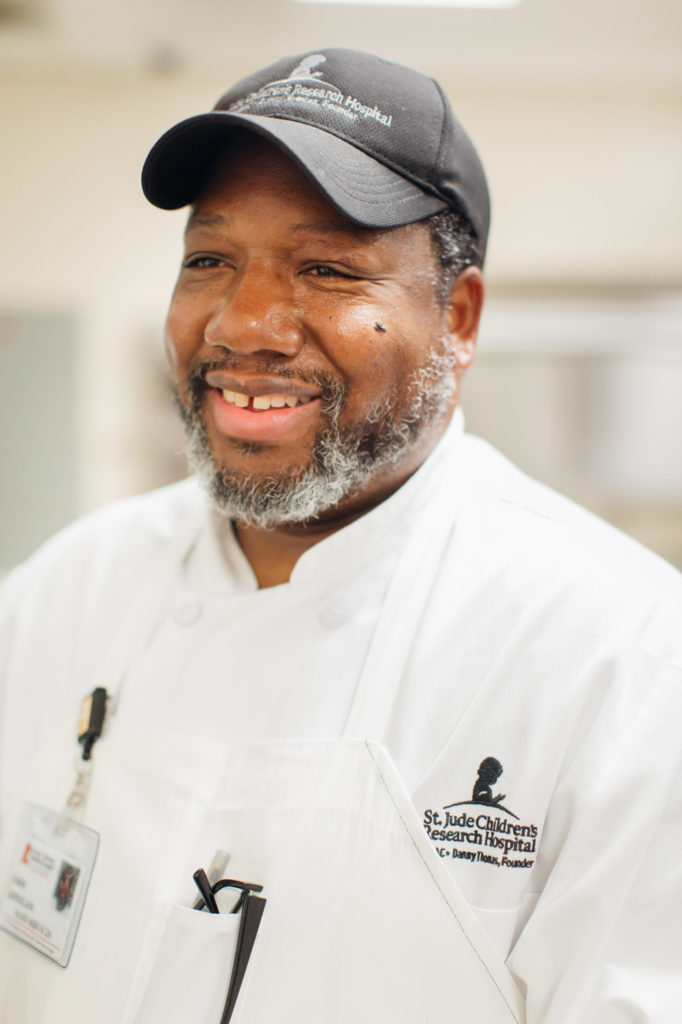
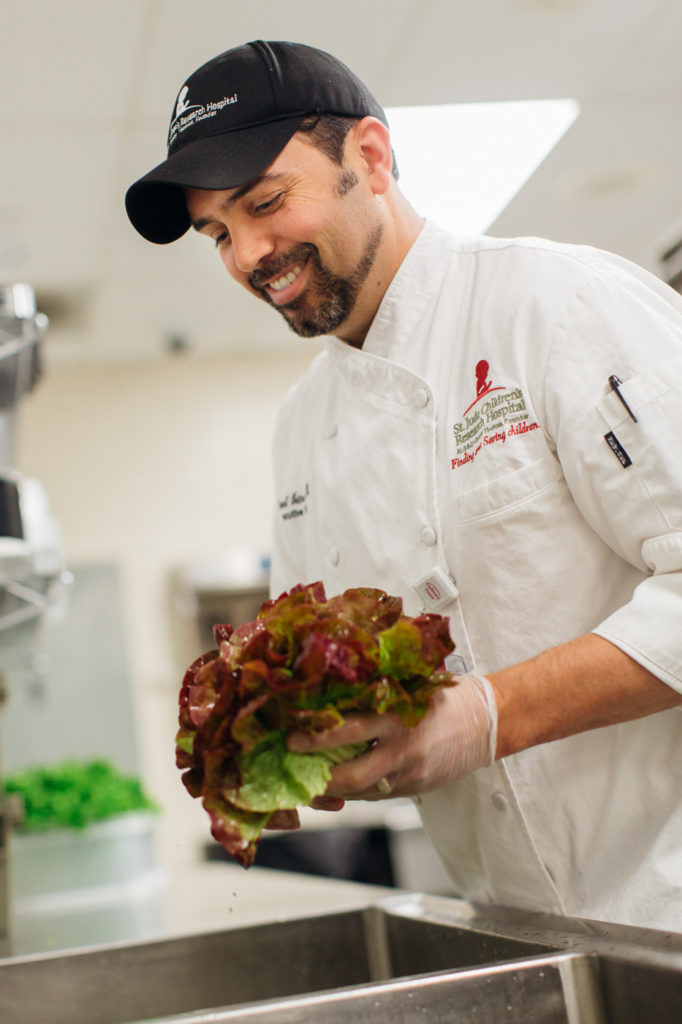
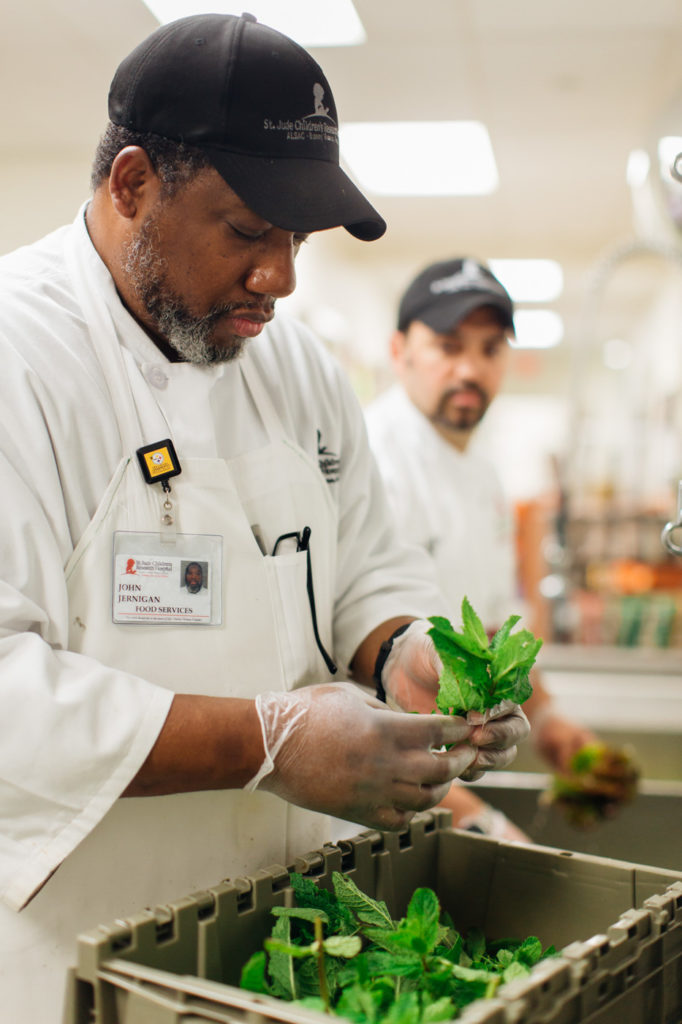
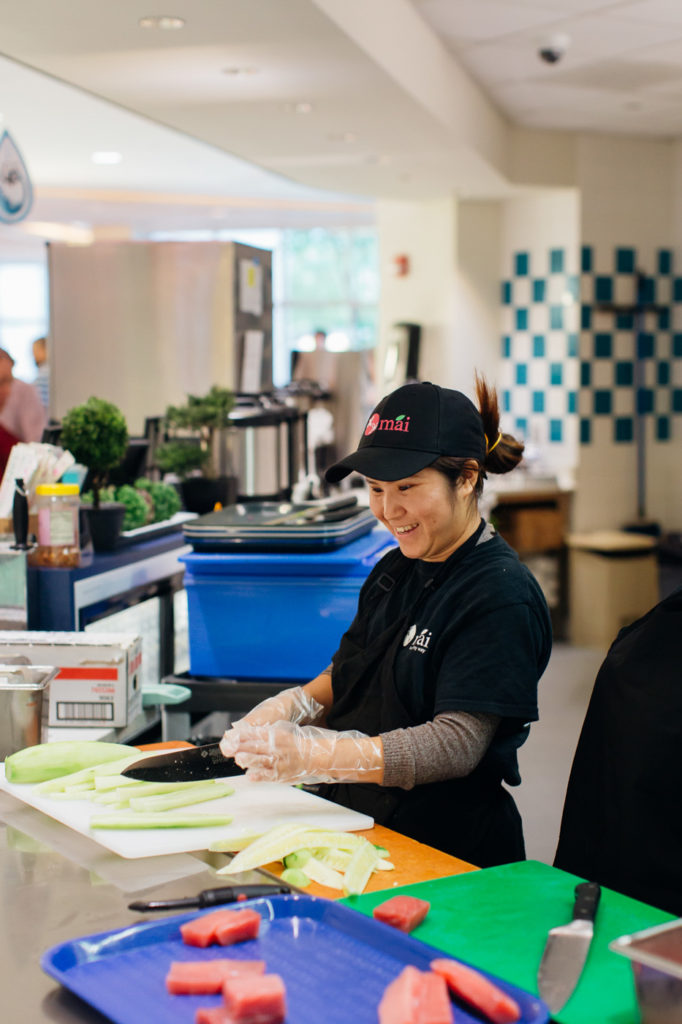
It doesn’t take a bioengineering degree to know this is what you don’t expect at a hospital. In a former life, I had planned on going to medical school. I’ve worked, volunteered and shadowed in too many to count. Foil-topped juices and beige plates of mystery meat have traditionally been the standard fare. But at St. Jude, Karen’s “healthier options” actually exist, thanks in part to Executive Chef Michael Vetro and his enthusiasm.
“We want to make great food, not hospital food,” Vetro begins, summing up in one line what could be the thesis of St. Jude’s food program. “We look at that as we’re really servicing everybody. We’re service operations; we help fuel those who can care.”
He’s just walked me through Kay Kafé, St. Jude’s cafeteria. It’s an open-ended circular hub with smiling wallpaper, glowing red and blue tiles, and food stations for just about any item a kid, parent or pediatric specialist could have a taste for. Think grass-fed hamburgers, “no antibiotic ever” chicken, a salad bar with almost thirty different toppings, comfort staples like mashed potatoes, vegetarian greens, and cornbread, and even rotating offerings like Korean tacos and lettuce wraps.
Vetro is bright and animated. He’s someone you wouldn’t doubt works with kids, but has an added layer of composure—perhaps due to an impressive resume—which includes working as Executive Chef for East Memphis’ prestigious Chickasaw Country Club before arriving at St. Jude.
It’s clear that he, along with his staff of almost one hundred, don’t view Kay Kafé as just an ancillary wing of the hospital, but as the opportunity to satiate diners’ nutritional needs and a sense of togetherness. Kay Kafé is like a piazza. It’s Grand Central Station. It’s the place where one’s sense of normalcy can recalibrate. As the only place to eat on campus, everyone from patient to PhD candidate (St. Jude’s graduate program just opened last fall) passes through, feeding an average of four thousand people per day.
“Food is home. If you can have a taste of home, you can be transported temporarily,” Vetro tells me. “And even though this is a really fun place to go, [patients] still miss that aspect of it. They’re very fortunate they’re here, but they miss that taste of home. So that’s where I come in.”
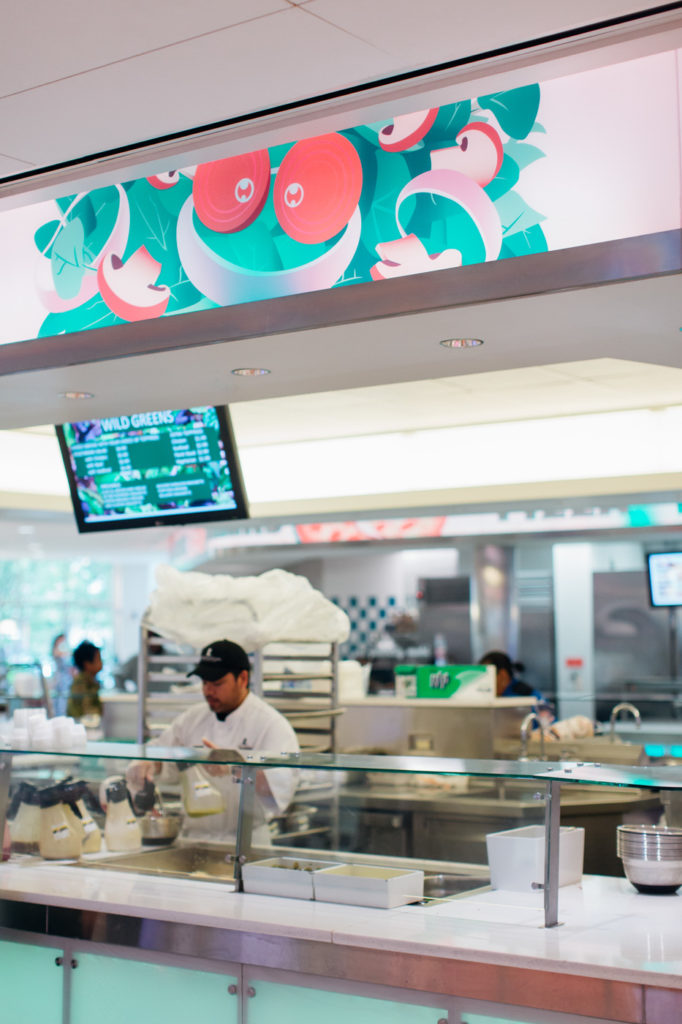
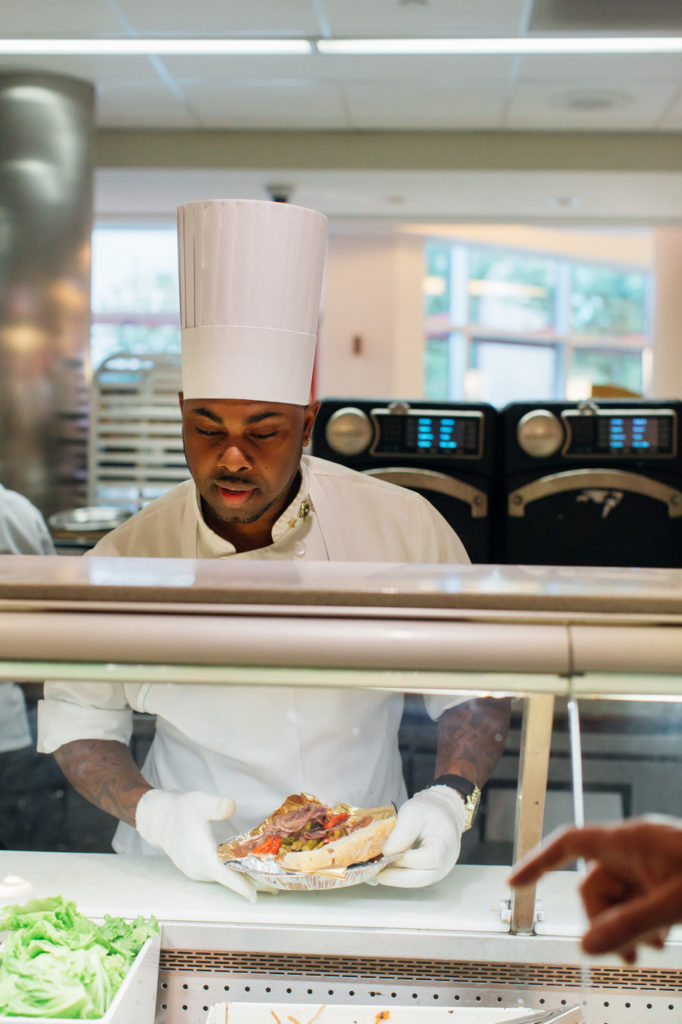
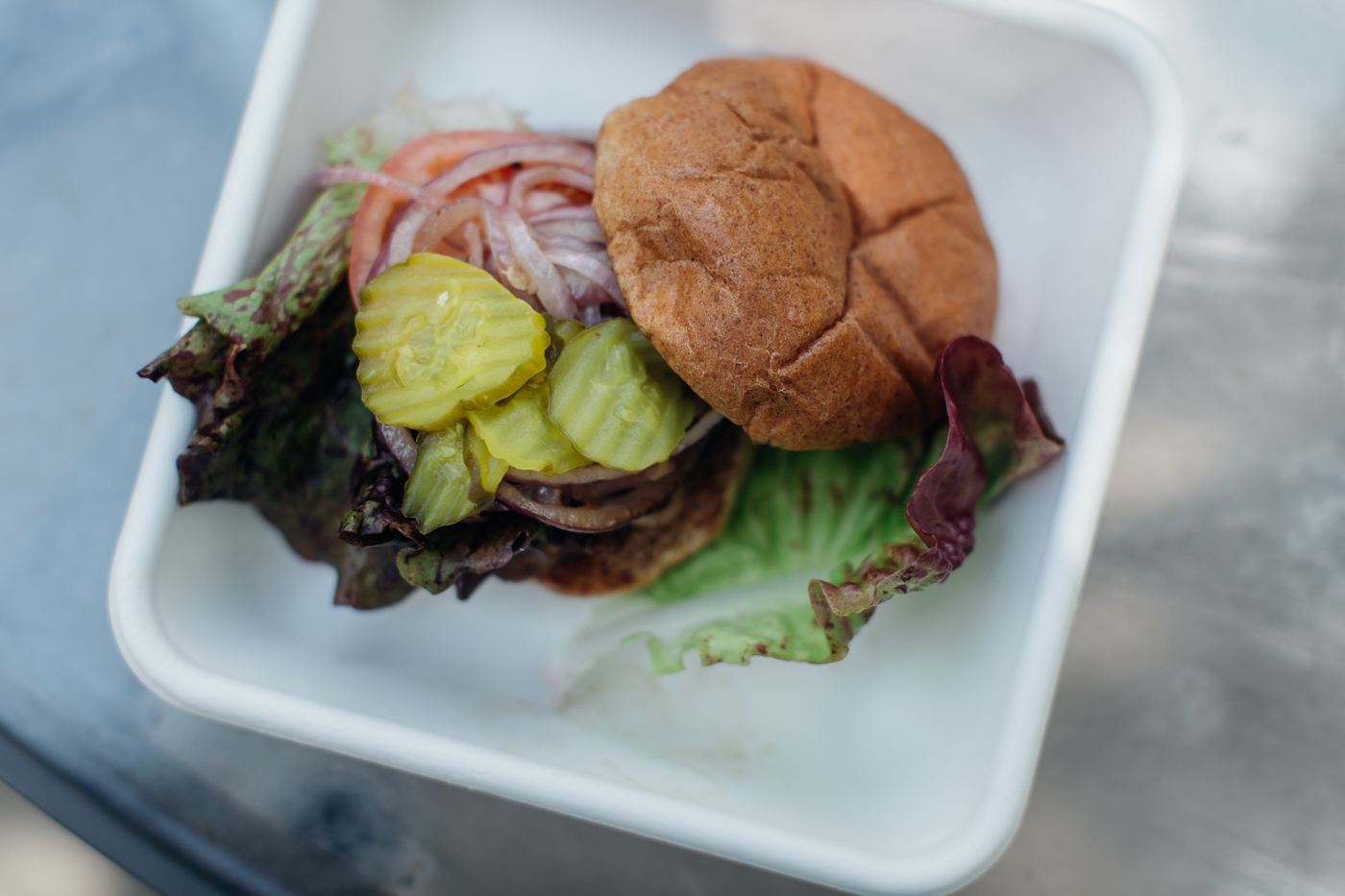
“Home” means something different to every patient, which is why for Vetro and his staff, flexibility and imagination are key even beyond the walls of the Kafé. Some days, recreating home may be sourcing specialty ingredients for a patient who wants to bake a vegan cake for her dad; on other days, it’s ensuring a patient a plate of honey-mustard mac ‘n cheese will be waiting for him after a procedure. Circumstances have certainly informed Vetro’s preparations in ways other chefs would never imagine; he’s even blended steak and mashed potatoes for a patient on a puréed diet.
“That is what food service is. It’s is about giving them the best thing and not giving them the bad news [of], ‘I’m sorry, we don’t have it,’” he explains. “You have to give this a shot and you have to put yourself in their shoes; because when you’ve got a taste for something, [whether] your mouth is too sensitive to eat or not, you want to give them the best experience possible.”
The experience doesn’t end when the meal does. Last September, Smith spearheaded a project to offer cooking classes to patients. What began with a goal of teaching healthy food choices has since evolved into pseudo-emotional therapy, a place where both kids and parents come to cook, have fun, and forget where they are.
“That’s why the parents are so into the food,” Smith tells me. “They feel the same sense of control. ‘My kid’s got a thing I can’t control and causes them to be sick, and I’m losing touch of everything. I used to be able to control their day and now, nothing.’ Food feels like a balance.”
“It sets them up for the future,” Vetro points out. He’s held cooking lessons of his own with some of the teen patients, teaching them how to make everything from pizza dough and Jello Jigglers to veggie-infused pasta sauce and tamales. “They are going to be moving forward with their lives, so these are life skills that are required to be a young adult.”
This is when it dawns on me—the conversational undertone I couldn’t peg at the start. At St. Jude, it’s the tangible future being talked about, not just a vague sense of hope. The staff here takes targeted steps toward creating the world into which its patients will walk. It’s a philosophy at the foundation of all hospital interactions. It’s not an “if” at St. Jude, but a very determined feeling of “when.” Because of that, every little detail comes into focus: the seventy-plus bed vegetable garden that supplies a portion of the kitchen’s produce, the planned construction of a juice bar, the Survivor’s Day meal that feels like a family homecoming, the hospital’s Childhood Solid Tumor Network where if a doctor wants to study a certain kind of tumor, they can contact St. Jude’s tumor library, which will grow and send it to them free of charge.
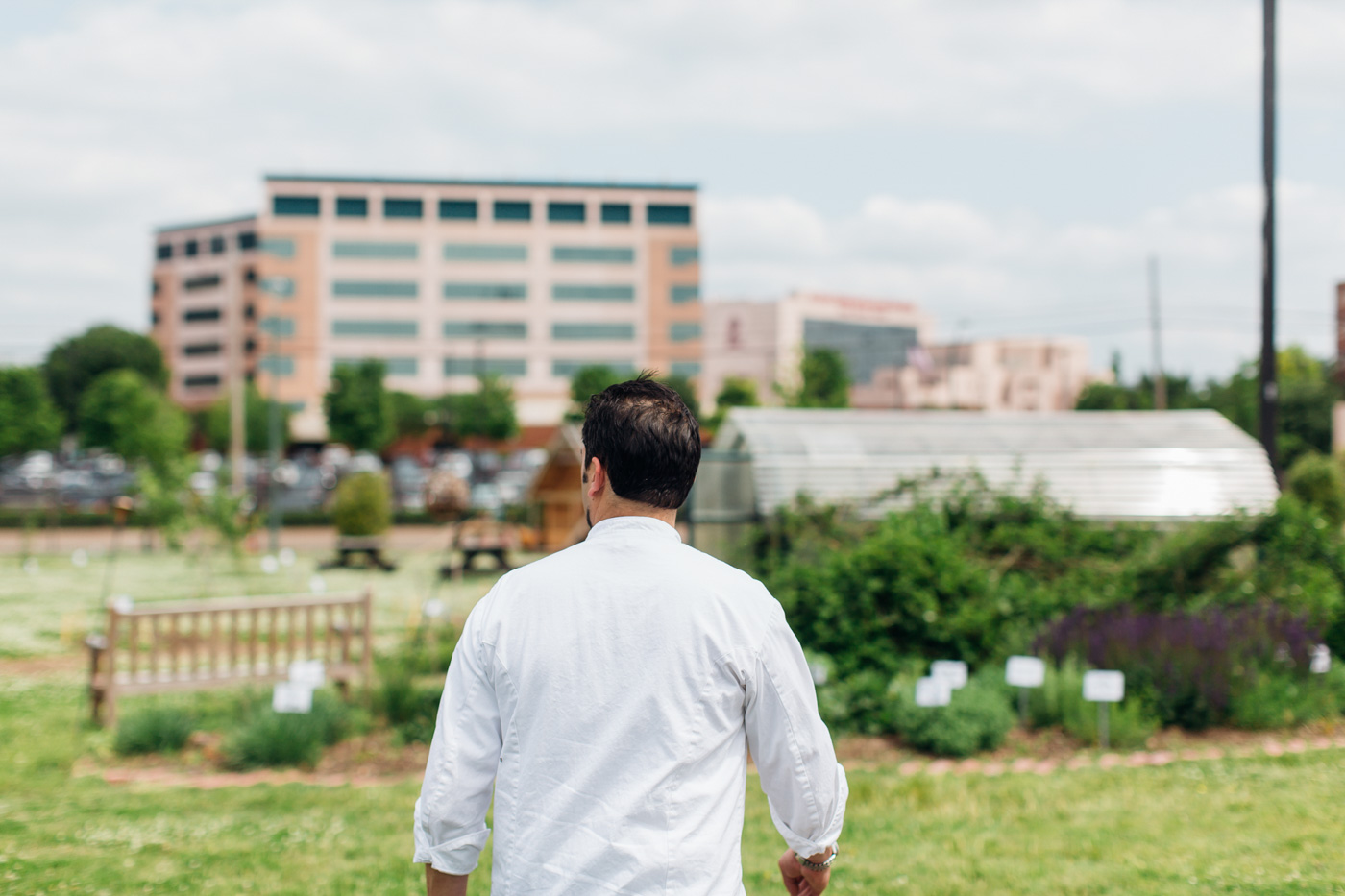
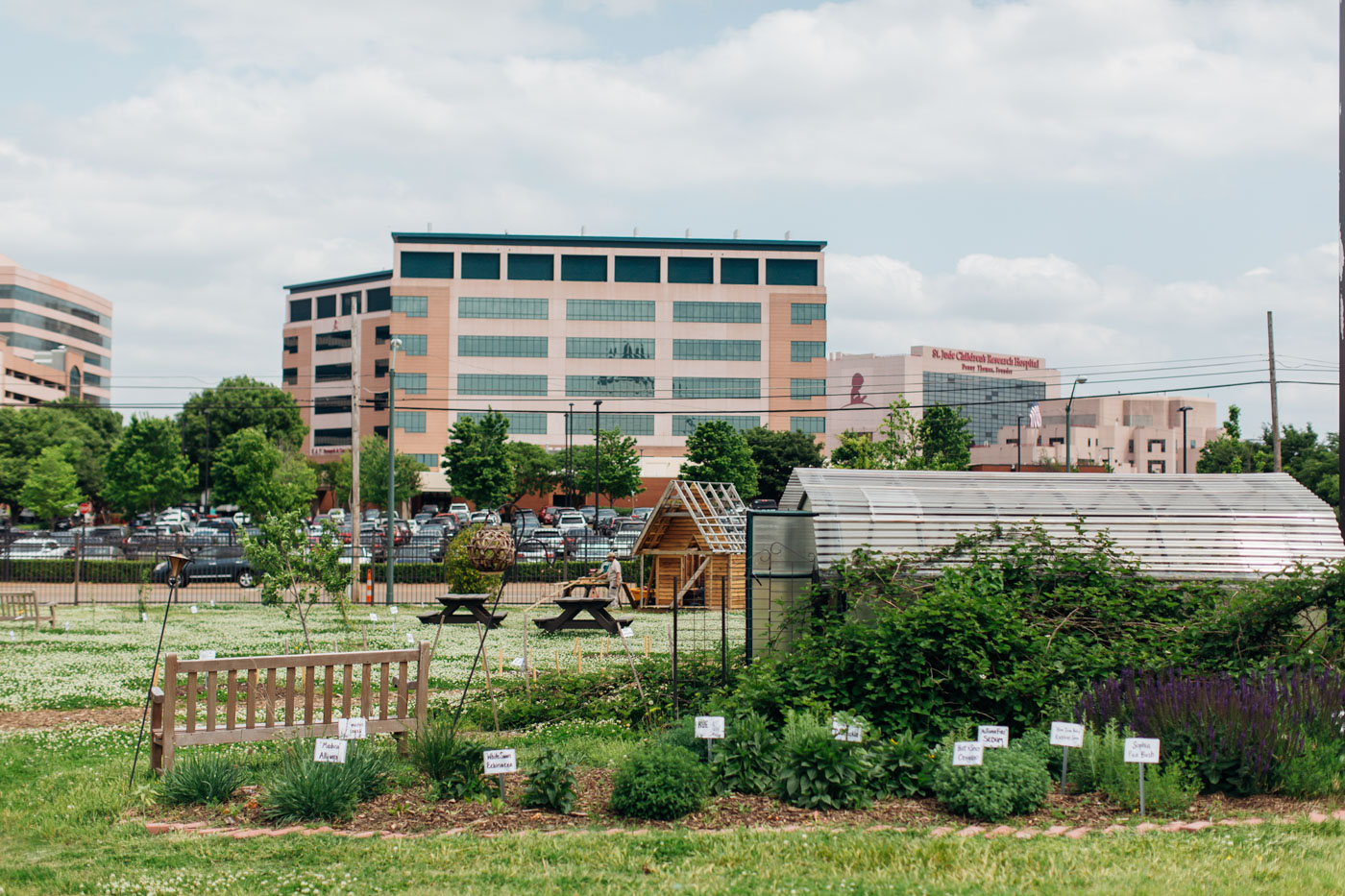
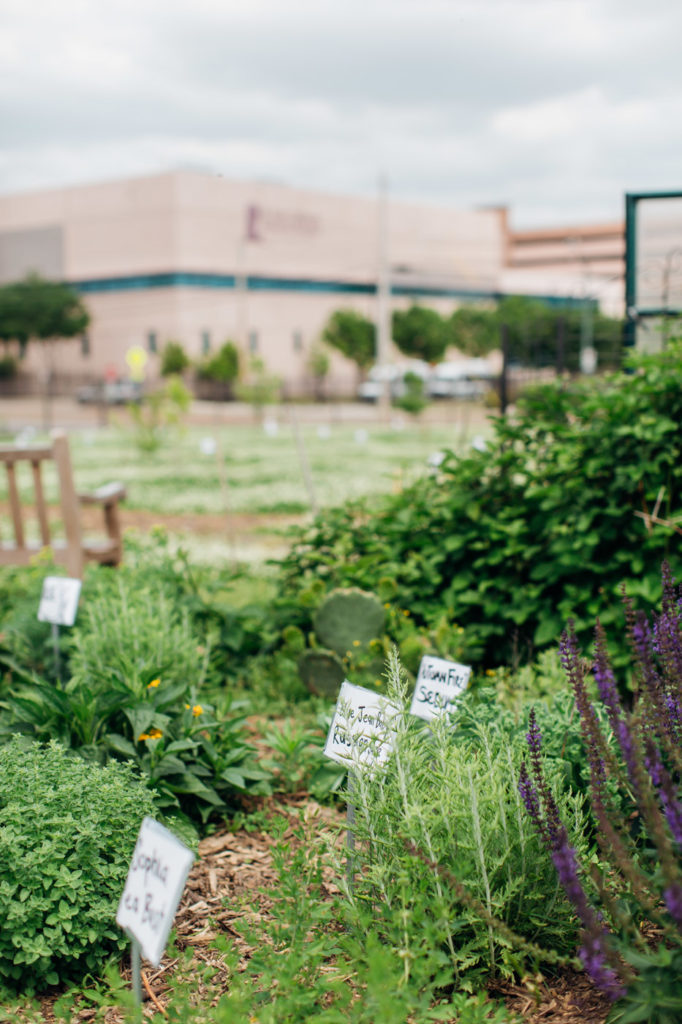


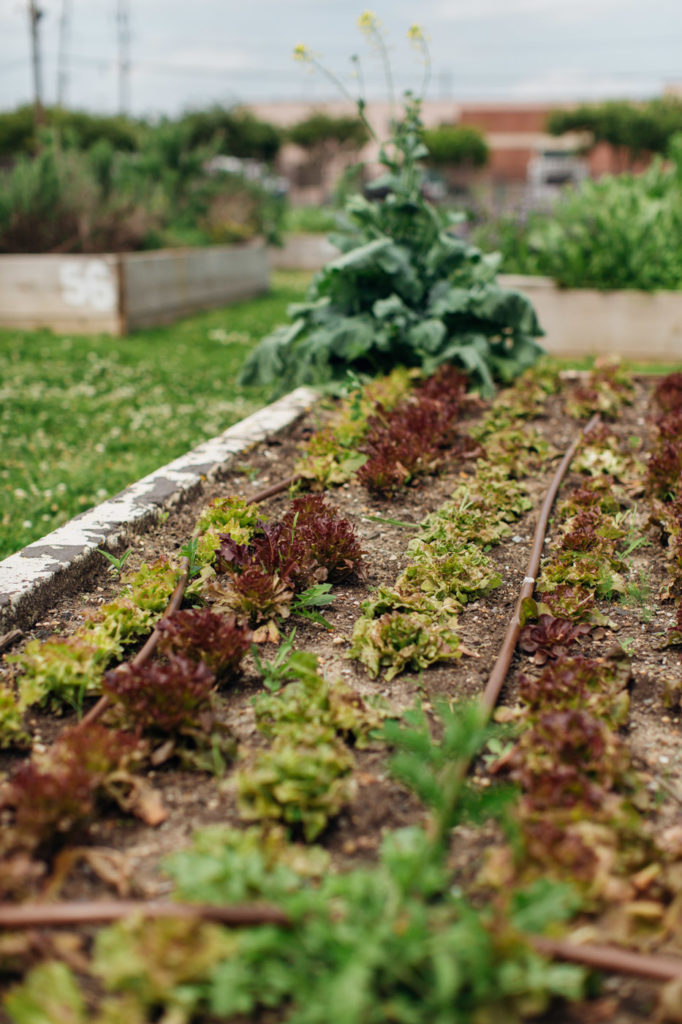
The community at St. Jude shares an unabashed spirit that, like a muse, invites you to be playful with constraints. Observe the constraints, and then think outside of them. It’s far from juvenile, but it is childlike, and nothing demonstrates this better than the music huddle.
Once a month, Vetro gathers his team in the bakery outfitted with funny hats and makeshift instruments (no kids are present, just to be clear). “This is Memphis,” Vetro reminds me. “Home of the blues, rock ’n roll, Justin Timberlake. We’ll play music and lip sync, and it’s all because we work with these kids.”
At St. Jude, food is where it all begins—with playfulness in mind. “The resilience, the energy, the youthfulness of the place—because of these children and their internal energy, it’s just awesome,” Vetro says. “People look in the bakery and wonder what we’re doing. We’re using pistachios as maracas; that’s what it’s all about.”
——
St. Jude operates on donation, grant and through the support of some insurance. If you’re interested in contributing to the work of St. Jude, you can learn more at stjude.org.





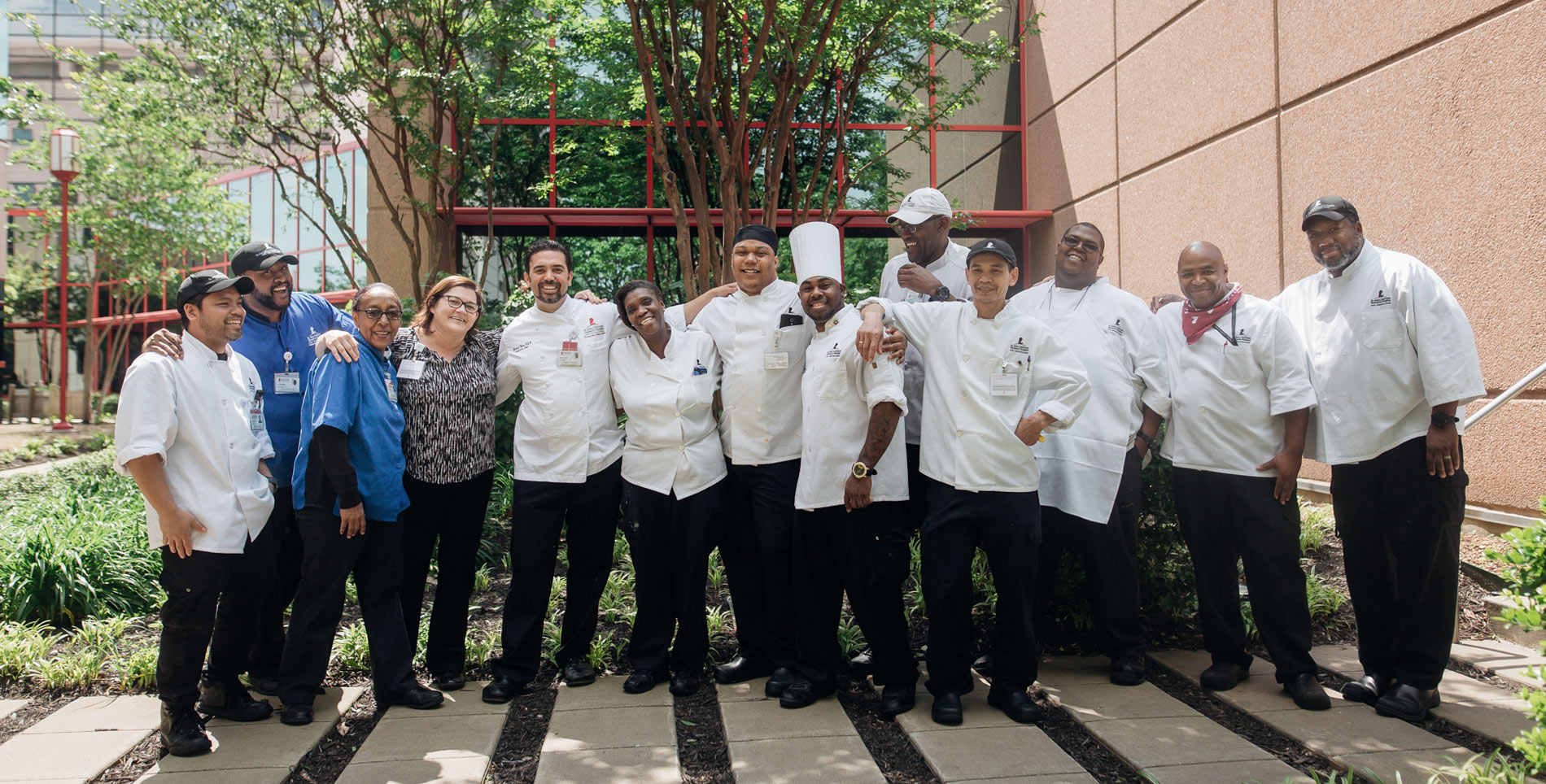

Our comments section is for members only.
Join today to gain exclusive access.